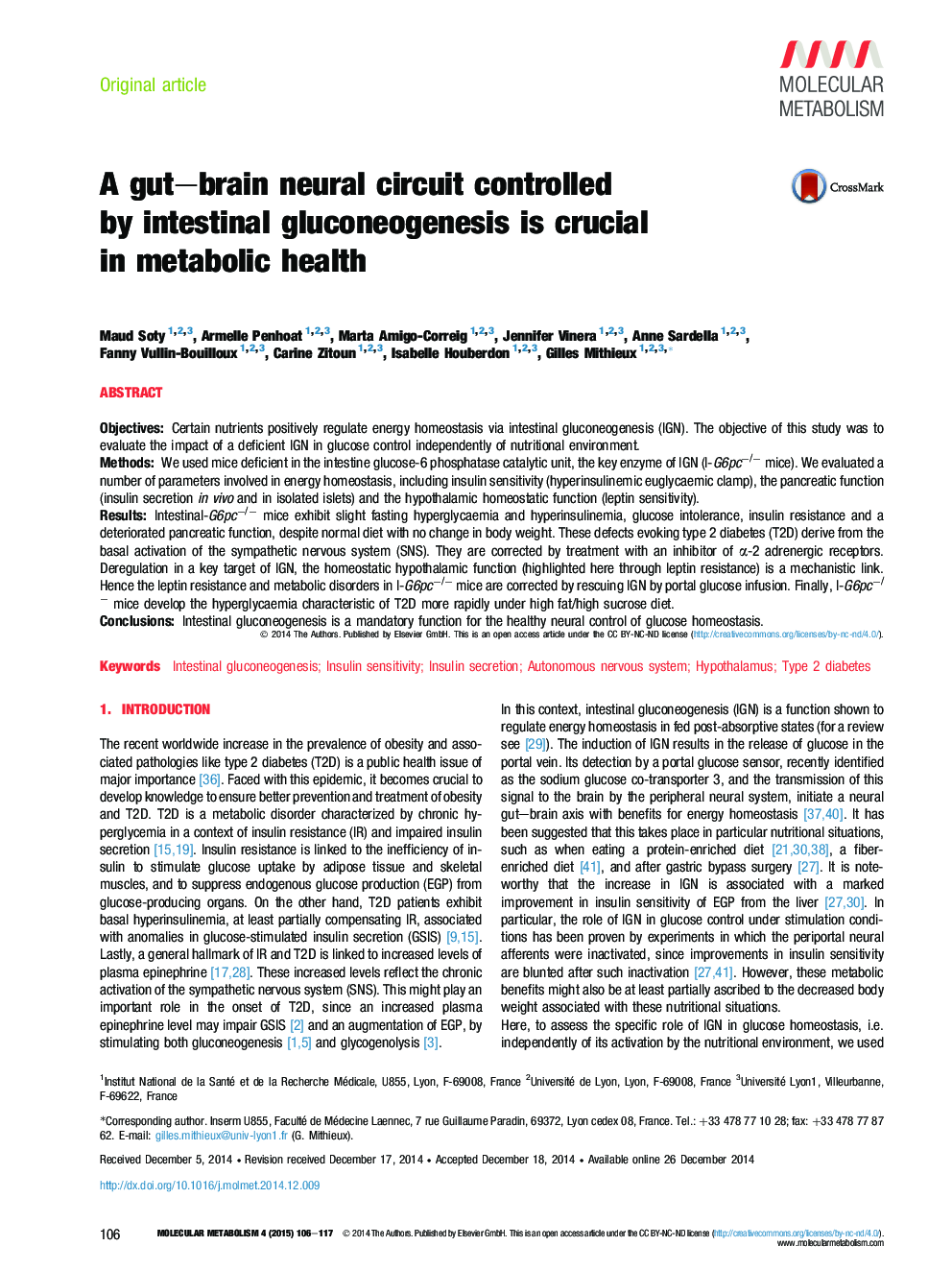| Article ID | Journal | Published Year | Pages | File Type |
|---|---|---|---|---|
| 3001619 | Molecular Metabolism | 2015 | 12 Pages |
ObjectivesCertain nutrients positively regulate energy homeostasis via intestinal gluconeogenesis (IGN). The objective of this study was to evaluate the impact of a deficient IGN in glucose control independently of nutritional environment.MethodsWe used mice deficient in the intestine glucose-6 phosphatase catalytic unit, the key enzyme of IGN (I-G6pc−/− mice). We evaluated a number of parameters involved in energy homeostasis, including insulin sensitivity (hyperinsulinemic euglycaemic clamp), the pancreatic function (insulin secretion in vivo and in isolated islets) and the hypothalamic homeostatic function (leptin sensitivity).ResultsIntestinal-G6pc−/− mice exhibit slight fasting hyperglycaemia and hyperinsulinemia, glucose intolerance, insulin resistance and a deteriorated pancreatic function, despite normal diet with no change in body weight. These defects evoking type 2 diabetes (T2D) derive from the basal activation of the sympathetic nervous system (SNS). They are corrected by treatment with an inhibitor of α-2 adrenergic receptors. Deregulation in a key target of IGN, the homeostatic hypothalamic function (highlighted here through leptin resistance) is a mechanistic link. Hence the leptin resistance and metabolic disorders in I-G6pc−/− mice are corrected by rescuing IGN by portal glucose infusion. Finally, I-G6pc−/− mice develop the hyperglycaemia characteristic of T2D more rapidly under high fat/high sucrose diet.ConclusionsIntestinal gluconeogenesis is a mandatory function for the healthy neural control of glucose homeostasis.
